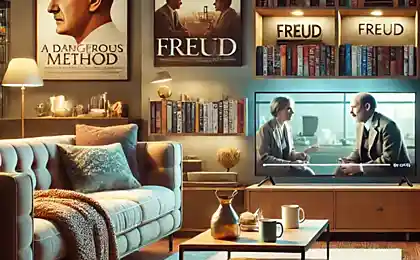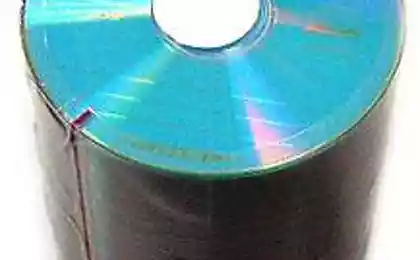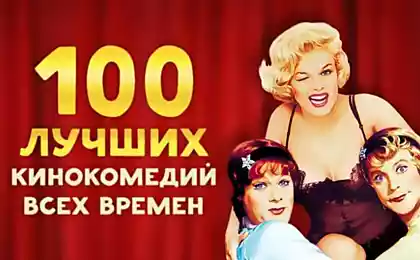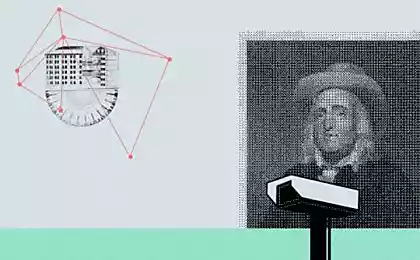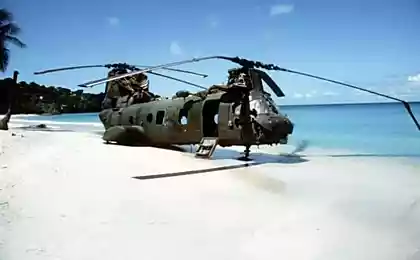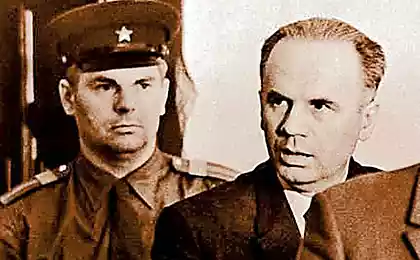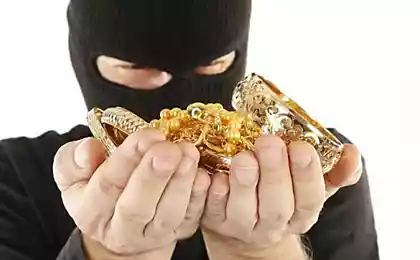654
How to hide nuclear waste for ten thousand years

Currently, America has no plans for storing nuclear waste. However, once was highly ambitious plan: to bury them under a mountain for 10,000 years. This essay from Method Quarterly, published on Gizmodo, reveals the mythical and the mundane problems of nuclear waste.
A story about the myths of Yucca mountain would cost to start with a single retreat. In 1983 a small fee of one-tenth penny per kilowatt-hour to start to appear on electricity bills in America. The money was supposed to go to Yucca mountain, "the wrinkle of the earth" on the edge of the landfill in Nevada. She had to turn into a massive tomb of the atomic age. Waste from nuclear power plants and weapons would be stored there for at least 10,000 years until radioactivity drops to a safe level. Of the state and civilization can fade and disappear, but Yucca mountain will stand.
In 2014, when the Department of energy has collected $ 30 billion to the Fund for nuclear waste disposal, it quietly stopped collecting the fee. Ceased because the court ruled, because nuclear repository Yucca mountain does not exist. Five miles of tunnels from the stated forty — have already been carved in stone, but no radioactive waste stored there. In 2010, the administration of U.S. President canceled great plans for Yucca mountain. Three and a half years later, the court ruled that a Federal institution may not charge a fee for that clear.
One thing to watch the long absence of a nuclear waste repository, Yucca mountain, but quite another political nonsense: $ 30 billion of taxpayer money was collected for the construction of a mythical mountain.
But Yucca mountain was more than that. The ambition behind it, exceed the lifetime of any policy, whether two years or six years in the post. The Americans tried to build a structure that would stand longer than the Great pyramids of Egypt, longer than any built by the people of the building, the longer the life of any language. Looking at the past 10 000 years, it is difficult not to consider Yucca mountain in okolomatocnah terms. We can imagine future earthlings, who will think about Yucca mountain just as we are about the Parthenon or Stonehenge — strange massive structures impregnated with an alien spirituality.
Ten thousand years may be legendary, but the storage of nuclear waste is a pressing and practical problem for people. This is a problem when incredible time frame with a human face, when the vision of the great faces and small everyday obstacles.
Radiation remains a spooky threat: an invisible, silent, without a trace and smell of danger. In polluted areas, you can see people draped in the costumes of all bodies and are equipped with Geiger counters. They may be similar to members of the sacred sects, drawn by invisible force.

At sufficiently high levels of radiation passes through the body, damaging the tissue so that it becomes immediately known. At low but still dangerous levels, you will not see, not feel, not hear radiation running through you but might know your DNA because it will get mutations that will begin to replicate and divide cells, until one day, they will not become cancerous. It's a curse, maybe decades to remain in the shadows.
In 1981, the U.S. Department of energy assembled a task force that was supposed to solve the question: how to get in touch with the future?
Among consultant experts were engineers, archaeologists, linguists and specialists in nonverbal communication. The group was called the Human Interference Task Force and the task to figure out how to keep people away from a future deep geological repository of nuclear waste — like Yucca mountain.
The store needed some kind of physical token that would have lasted 10,000 years, so the task force has considered different materials, metal, concrete, plastic. The marker was supposed to ward off, not to attract people, like Stonehenge, the pyramids or other monuments that delight tourists for thousands of years. The token should be a warning. But how to warn people of the future, culture and languages which will be completely different?
In addition to the physical token, the task force recommended that "oral transmission", which would keep the warning for future generations. Even now, when the language mutates by itself, legends and myths remain the same. Imagine Homer or the epic "Beowulf", but on a longer timeline. The message, written in the dry language, would imply that the population around Yucca mountain would tell stories that would include immortalized knowledge about the "special" place.
Thomas Sebeok, linguist, went even further. It is suggested to sow and nurture the whole folklore around Yucca mountain, and even inventing annual rituals, during which retold stories about would be store. These stories do not even have to explain the science of radiation; they just hinted would be in great danger.
The "actual "truth" will be exclusive hidden — and that we could call a dramatic accent on an "atomic priesthood"," writes Sebeok.

In those decades, when Yucca mountain was in the development stage, interest in the repository showed people 800 miles up the West coast of the Hanford, Washington. Japanska nuclear reservation produced nearly all the plutonium that was part of the U.S. nuclear Arsenal during the cold war. Then he was taken out of service. Now, in place of reservation, the largest clean-up project environment in the country.
Two hundred million gallons of radioactive waste confined in 177 steel tanks underground. Waste ranging from liquid to viscous and tend to flow away from the aging tanks into the groundwater.
Of course, the plan was not like this. The idea was to build a vitrification plant on site, where radioactive waste could be mixed with molten glass and poured into steel columns — creating an impenetrable nuclear coffins, which then went under Yucca mountain. But the cleanup at Hanford was terribly wrong. The vitrification plant, which was supposed to open in 2011, is still only halfway completed. In addition, even if you're able to safely strengthen and seal the radioactive waste in Hanford, still no place to store them.
And radioactive waste continues to leak.
If you go down the West coast from Hanford, you can get in carlsbad, new Mexico, home of the Waste Isolation Pilot Plant (WIPP), a nuclear waste storage facility in the desert, which in fact was built.
But, unlike Yucca mountain, WIPP is only designed to handle low level waste. It can isolate the things that have been in contact with radioactive material, but they are by-products of nuclear reactors — no. Gloves, tools and other equipment used to handle plutonium and uranium are Packed in drums that are then stored in tunnels in the fields of natural salt. Over time, the salt gathered around the barrels, placing waste in a mineral tomb.
The problem of long-term storage of waste in WIPP remains real, but purely theoretical. Only when WIPP will be sealed, a plan to warn people of the future will be set in motion. Currently, the preliminary plan includes a series pyatnadcatiletnij granite monuments, on which is engraved with warnings in seven languages.
But, like Yucca mountain, WIPP has been the subject of more fantastic and incredible offers. In 1991 about her also convened an interdisciplinary group to study the problems of communication with the future. In the end, a proposal to create a landscape of thorns, and put warning messages like these:
"This place is a message... and part of a system of messages... pay attention to him! Sending this message was important to us. We considered ourselves a powerful culture. This place is not honorable... anything meaningful and important... here there is nothing of value here. Here is that dangerous and disgusting for us. This message warns about the danger."
In February, WIPP suffered a collapse, then the fire, causing radioactive material got into the ventilation shaft, which led to the irradiation of 21 working on the surface. Since WIPP is closed and may not open for many years.

Because Yucca mountain curled, the Ministry of energy wanted to send vitrified high level waste in WIPP. But this plan was not destined to be realized.
How could rupture the cylinder with radioactive waste at WIPP? The official investigation pointed to a chemical reaction between nitric acid and trace metals in the drum. But this reaction occurs only at high temperatures, so suspicion fell on the other cylinder component: kitty litter.
Kitty litter used to stabilize radioactive waste, but recently the contractor has shifted from the filler to the plastic substrate to the filler on the basis of wheat. Rotting wheat could create enough heat to start a chemical reaction which destroyed the cylinder.
In 1984 the German magazine Zeitschrift für Is (journal of semiotics) published a dozen academic answers on the topic of how to leave a message that will reach across 10 000 years. The options ranged from simply weird to fantastic. One suggested to create a barrel that it would be impossible to open without incredible technical skills. The other is to create a series of warnings in concentric circles, which would be expanded along with the development of language. A couple of semiotics, Francois Bastide and Paolo Fabri, took up the idea Sebeok on nuclear folklore, but came to a completely strange solution.
They proposed to create a "ray cats," creatures whose fur would change color in the presence of radiation — a sort of walking and purring and Geiger counters. But this is only part of the story. Yet semiotics has proposed to launch in folklore stories or saying that when the cat changes color, you better run.
The beauty of this story is that someone took the idea of Bastida and Fabry as a basis and wrote a song about ray cats. According to the authors, the song had become so clingy that could be passed down from generation to generation for over 10,000 years. Radiation no cats. Nuclear repository Yucca mountain no. But a song about them.
In Hanford there are no fantastic creatures, but there are rabbits, pigeons, swallows and tumbleweeds. During the work Haponski reservations, this place has turned into a national Park, unspoiled by agriculture and industry. People go there Hiking.
But according to the program of biological control of Hanford, wildlife has the potential to expand radiological vector. Rabbits, badgers, squirrels can carry radioactive waste to thousands of hectares. They should be shot. Even tiny termites and ants could unearth radioactive material.
And then there are tumbleweeds, whose roots can go ten meters in the ground and suck up radioactive waste. In winter, the roots dry up, and a tumbleweed goes on a journey, tumbling in the wind. In 2010, Hanford caught thirty of these radioactive weeds.
Ever nuclear waste will actually be stored under a rock, steeped in folklore and warnings stored for 10,000 years. But still this idea only tumbleweeds, as the eternal symbol of boredom and inaction.
Source: hi-news.ru
